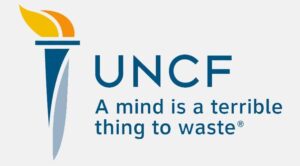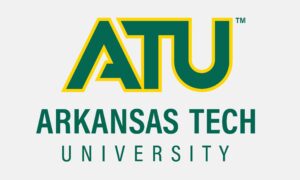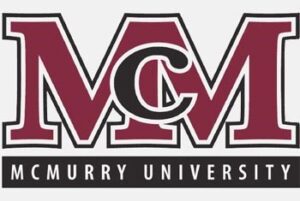

From the Desk of
Jaci Thiede ¦ Partner
It’s the People!
As part of a campaign readiness assessment, I recently met individually with eight members of an advancement team. This team has been through a significant number of leadership changes over the past decade, so professional development has generally been put on the back burner. However, everyone I met with told me – unprompted – how appreciative they were that their new Vice President reworked the budget to ensure everyone on the team would have at least one professional development opportunity annually. The decision to prioritize the team’s professional growth clearly made a huge statement and is positively impacting morale, job satisfaction and the inclination to stay at the institution.
What a great reminder of how important it is to invest time, effort, and resources into developing the people who ensure our organizations’ success day in and day out.
As fundraisers, we know that it is easier and less expensive to retain a donor than to acquire one. This holds no matter where they fall on the donor spectrum—annual, major, or planned giving. It’s exactly why we develop donor retention strategies through various cultivation, stewardship, and communication plans. Then, we allocate resources to those strategies, execute our plans, analyze our results, and tweak as needed, year after year. That’s a very high level, but it’s the general cycle.
As leaders, managers, and/or supervisors, we should apply this same “cycle” concept to retaining staff. After all, it is generally easier and less expensive to retain a top performer or a rising star than to lose them and have to go to market to replace them.
Turnover disrupts workflow and results in significant financial and organizational costs. From recruitment expenses to lost productivity during the transition period, the impact of turnover can be staggering, no matter where the employee falls on the employment longevity spectrum. I’ve seen:
- a rising star take another job because they didn’t know how to talk to their supervisor about their career goals and professional development;
- a mid-level manager with a proven track record for building successful programs leave for another position because she was passed over for a promotion several years in a row; and
- a seasoned and successful gift officer with a long institutional memory, make a career change because he didn’t believe he was valued by leadership.
In all these examples, the employees didn’t want to leave; they just didn’t see a path that made staying feel like a strategic career choice. So, they moved on, and the institutions they served lost out. Programs were disbanded or put on hold, gift conversations had to be started months later, and, very importantly, institutional memory was lost. ROI took years to rebuild and be realized.
Advancement is a relationship business, but leading, managing and/or supervising should be a relationship business, too. Don’t forget about your people! Make sure you talk to them about their career aspirations and professional development needs. Be disciplined about setting annual goals and reviewing progress towards goals on a regularly scheduled basis. Commit to having candid two-way conversations about performance and what the future might look like.
Developing and retaining your team takes time and we all know there is never enough time in non-profit work. Non-profiteers are deeply driven and committed to fulfilling the missions they so passionately serve. If devoting time to your people is an issue for you, I encourage you do some self-reflection and evaluate if you are spending more time on what seems urgent or what is most important.
I hope you come to the conclusion that what is most important is your organization’s success and then realize that that success is contingent upon having a talented, dedicated, appreciated, and thriving team to fulfill that mission. Remember, it’s all about the people!
Gen Z Donors Are Coming. Here’s What You Need to Know
Although members of Generation Z are still far from their prime giving years, it’s never too soon for fundraisers to learn how to attract their support. A new report offers some insights into how Gen Z — born from 1997 to 2005 — likes to give and corrects some common misconceptions about their philanthropic style.
Key Findings
- 19% said they donate money, but 84% said they support nonprofits or causes in some way — including by volunteering (33%) or following or promoting them on social media (25%). A third of Gen Z donors said they plan to give more as the year progresses.
- 14% of nonprofit professionals thought Gen Z donors would find a thank-you letter meaningful, but actually, 34% of those donors did. 57% said they would give more if an organization mailed them a thank-you note.
- While 63% of fundraisers surveyed said they thought Gen Z donors were giving through social media, only 23% of Gen Zers said that was the case.
- 52% of those surveyed said they turn to social media to research organizations they’re considering supporting.
- 21% said they felt they could make the biggest difference on causes that mattered to them by promoting them on social media.
- 22% said the same about volunteering, and 18% about advocating. Just 11% said they felt they could make the biggest difference by giving.
- Much lower proportions of Gen Z reported donating through traditional channels — such as through monthly giving programs (8%), in response to an email appeal (8%), or in response to a mailed appeal (8%). Gen Zers were far more likely to say they made a donation at a checkout counter (40%), at a fundraising event (30%), or through the nonprofit’s website (29%).
- 42% said they tend to give spontaneously. 56% of Gen Z donors said they prefer to give “periodically, when I feel like it.” 18% said they like to give annually, and 11% said they make monthly gifts.
The report, Gen Z at the Table, from the Blackbaud Institute, can be found here.
COP, 5-
Alunmi Client Partner News
The University of Illinois Urbana-Champaign received a $50 million gift from alumnus and C3 AI chief executive Thomas M. Siebel to establish a school of computing and data science, which will be named The Siebel School of Computing and Data Science. PND, 5-1
The United Negro College Fund received a $1 million gift from Robert Kraft, owner of the New England Patriots and founder of the Foundation to Combat Antisemitism, in support of programs to encourage unity and strengthen partnerships between Black and Jewish organizations, students, and leadership to combat hate. PND, 4-11
9 Ways to Raise More From Donor-Advised Funds
1. Don’t wait until December to focus on DAF gifts.
Don’t wait until December to start asking donors to make a DAF gift…you might not get the money by the end of the year. Ask donors, “Have you done a health check on your DAF lately?” and mentioning DAFs in fundraising appeals to donors at all levels.
2. Remind DAF donors to ask for a distribution.
DAF account holders must take action to trigger a donation. Some assume their DAF provider automatically makes distributions to charities each year. Suggest automatic distributions from DAFs as a way to make giving easier for donors while securing recurring income for your nonprofit.
3. Make the most of your data.
For starters, gather as much data as possible on DAF gifts and analyze reports regularly. Look for patterns, such as fund providers that make a high volume of distributions to your organization and advisers or other employees at those institutions who were involved, which can help guide your outreach strategies.
4. Treat DAF supporters like potential big donors.
Look at data on gift amounts and renewal rates of DAF donors to gain insights into their giving capacity and determine how best to engage them. If a first-time supporter makes a $100 gift through a DAF, treat them as if they have given at a higher level. This special attention can help increase giving from individuals with DAFs.
5. Try to learn more about anonymous donors.
Processing an anonymous DAF gift? Call the sponsoring organization to say thanks and verify that there is no additional information about the donor that your organization could use to steward them. You may be surprised how much more information you can receive.
6. Connect with DAF administrators and advisers.
These professionals want to be helpful advisers to their clients. Make their jobs easier by providing simple talking points about your work, which can be shared with donors who are interested.
7. Tap into your networks.
Attend philanthropic events in your city and try to meet people who work at DAF sponsoring organizations. Ask how your nonprofit could be good partners to them and help them serve clients interested in your work. Try to build bridges to these professionals through existing supporters.
8. Promote DAFs as planned gifts.
Some DAFs become “orphans” when the person who owns the fund dies with no plan for a successor adviser and no clear direction on how the money should be spent. Be smart and talk to your donors about leaving their DAFs your organization in their will or including it among the beneficiaries. Mention DAFs in marketing materials about planned giving to make sure donors keep them in mind as another way to leave a legacy.
9. Just ask.
Ask your donors if they have a DAF; if so, encourage them to give through it.
COP, 4-23
Welcome Returning Client Partners


We Know Colleges & Universities
For more than 35 years, Alexander Haas has been a fixture in the nonprofit community. We are honored to have worked with so many large and small college and universities; both public and private institutions, across the country. These schools that help mold today’s young adults into tomorrow’s leaders. Take a look at our list of higher education clients, past and present.
A Fresh Approach to Fundraising
Our services aren’t cookie cutter. We don’t operate with a boilerplate, merely changing names and locations. We craft each and every service we provide to match your organization’s unique needs, wants and abilities. We work hard and expect you to do the same. Together we can help you transform your institution, your fundraising, and the community you serve.
Whether your need is in Capital Campaign, Annual Fund Campaign, Major Gifts, Leadership Annual Giving, Planned Giving or all of the above, we take a fresh approach to nonprofit fundraising.


